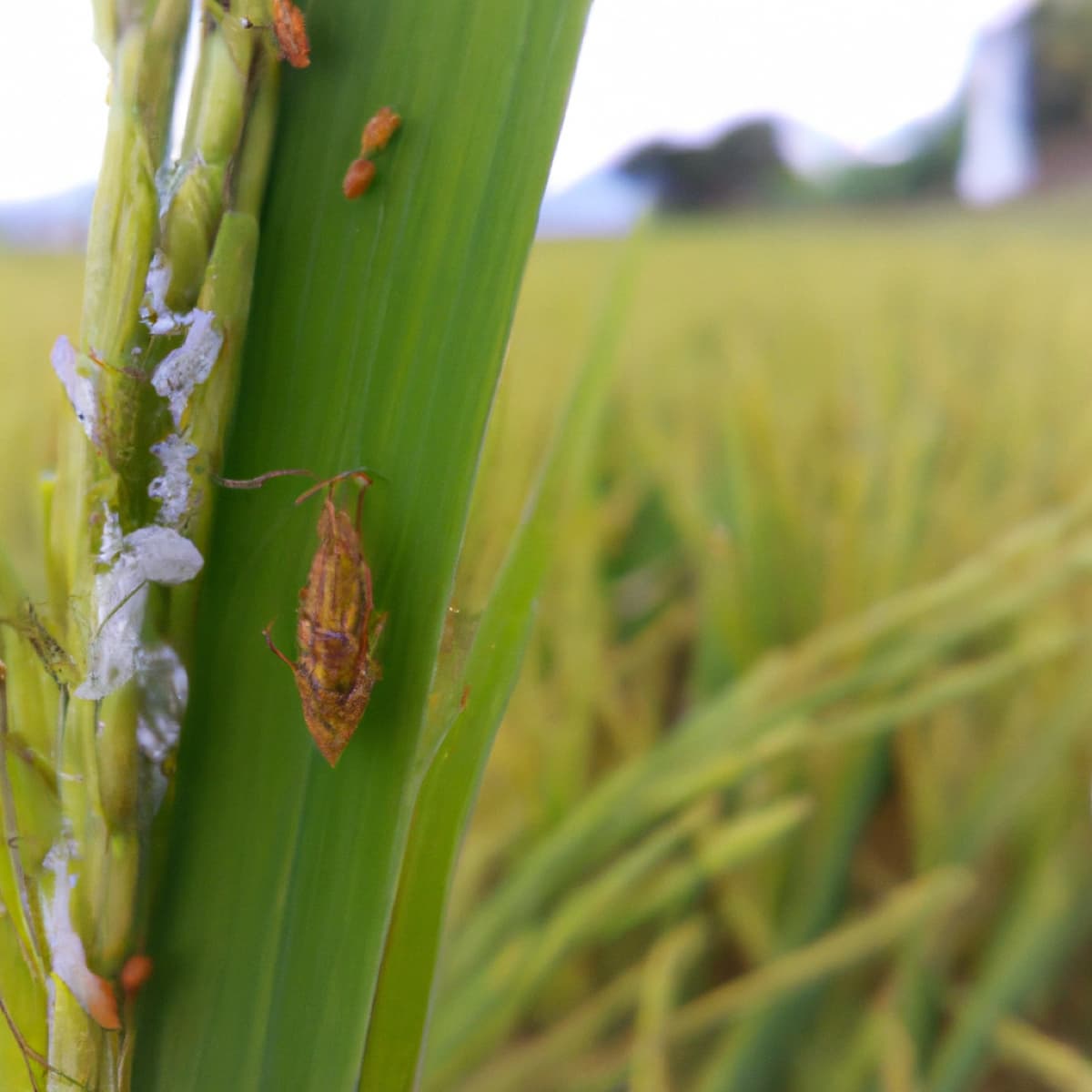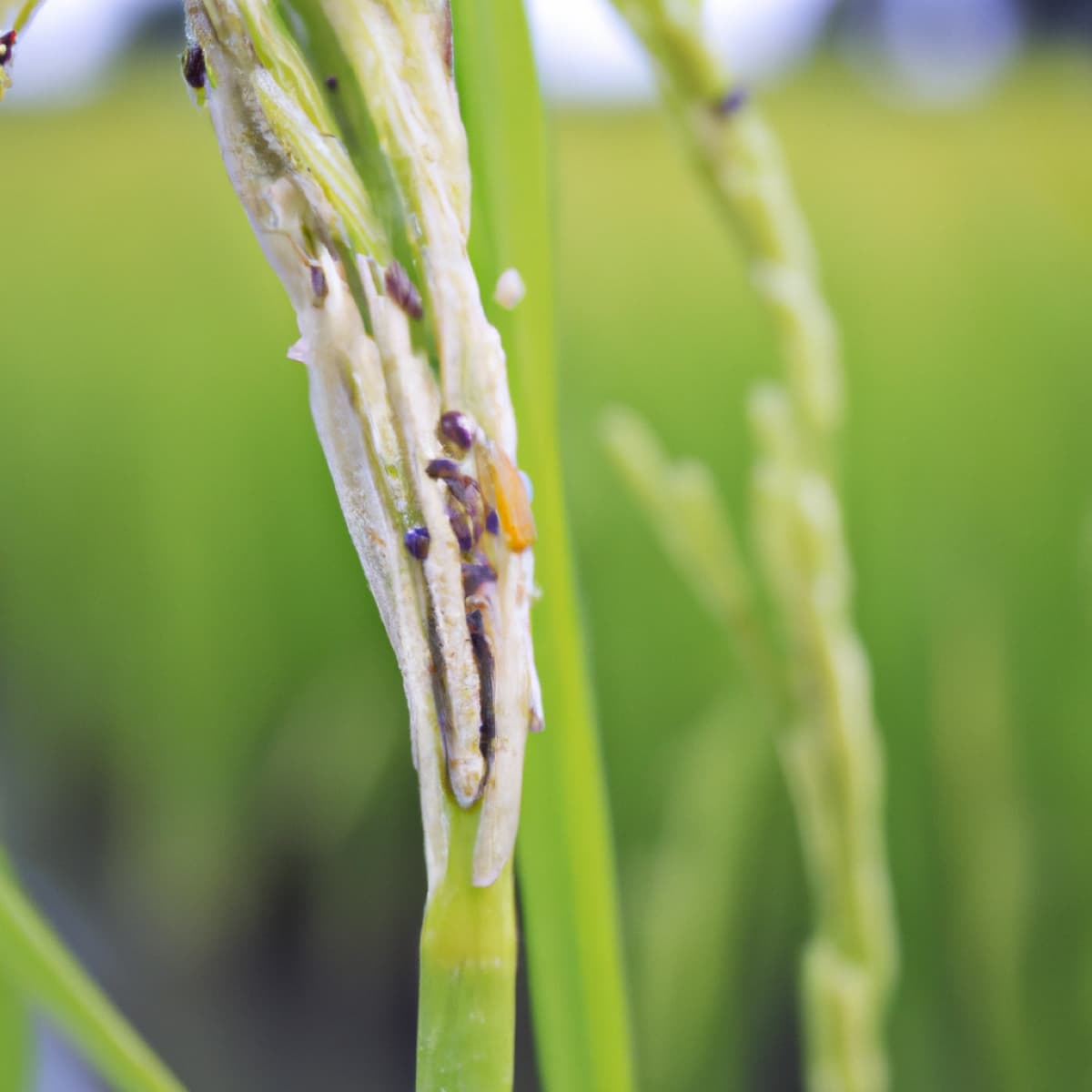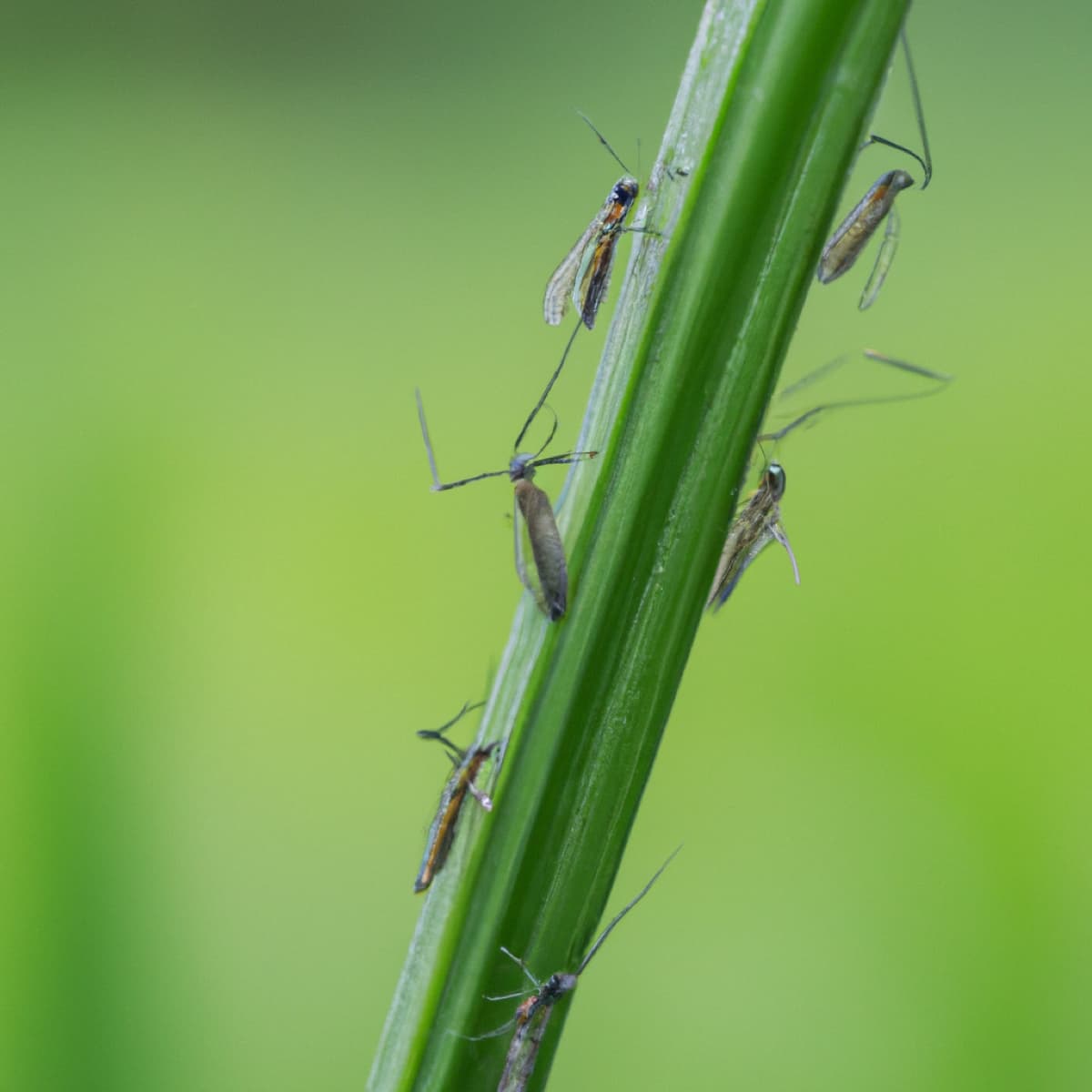Rice gall midge (Orseolia oryzae) The Asian Rice Gall Midge, Orseolia oryzae, is a small insect pest that feeds on rice plants and is a serious pest in rice farming. Larvae make galls, commonly called “silver shoots” or “onion shoots.” Stunted rice plants cannot produce seed heads. Let’s check out Rice Gall Midge management in paddy below.

Rice, also known as Oryza sativa, is a cereal crop and one of the most important staple foods in the world, providing over 20% of the global caloric intake. Asia grows most of this grass in flooded fields. Paddy harvests annually in warm, moist circumstances. It grows well in coastal and mountain valleys. Milling paddy grain removes the husk to make white rice.
Rice Gall Midge management in paddy
The life cycle of Rice Gall Midge
Female midges lay small batches of eggs (2-6) on the undersides of rice leaves during their lifetime, producing 100-400 eggs. The eggs are scarlet at first, but they turn chocolate brown as they hatch. Larvae crawl up the leaf sheath to the axil and penetrate the stem.
Feed for ten days to create a gall. Within the gall, pupation occurs.
Adults emerge from the gall (4-7 days later) via spines on the tip of the abdomen. Midges have a lifespan of 3-4 days and can have up to 8 generations each year. Adults spend the day hiding and are mainly nocturnal.
Occurrence of Rice Gall Midge
- Location of rice Gall Midge in the field: During the rice crop’s tillering stage, it lives in irrigated or rain-fed wetland areas. Upland and deepwater rice are also common.
- Seasonal activity: The insect remains inactive in the pupal stage during the dry season. When the tillering/buds begin to sprout after the rains, it becomes active again.
Factors favoring population increase in Rice Gall Midge in field
- Cloudy or rainy weather.
- Cultivation of high-tillering varieties.
- Intensive management practices.
- Low parasitization.
Identification of Rice Gall Midge in rice field
- Egg: At the base of the leaves, the fly lays elongated, cylindrical, shining white, red, or pinkish eggs, either singly or in clusters (2–6).
- Larva: After hatching, the maggot is 1 mm long and has a pointed front end. Forms an oval chamber surrounding the feeding site as it creeps down the sheath and into the developing bud.
- Pupa: wriggles up the tube to the tip of the silver stalk after emerging from the pupal stage. Projects halfway out of the tube.
- Adult: Fly is yellowish-brown and mosquito-like.
- The male is ash-grey in Color
- Adults feed on dewdrops.
In case you missed it: Thrips Management in Paddy: Symptoms, Treatment, Chemical, Biological, Natural, and Organic Control

Damage symptoms of Rice Gall Midge in rice field
- A hollow cavity or tubular gall is formed at the base of the infested tiller.
- The gall is a silvery white hollow tube, 1 cm wide and 10-30 cm long.
- The affected tiller inhibits the growth of leaves and fails to produce panicles.
- Deformed, wilted, and rolled leaves and elongation of leaf sheaths (known as onion leaf or silver shoot).
- Plant stunting and leaf deformity, wilting, and rolling can also be caused by drought, potassium deficiency, salinity, and plant viruses (ragged stunt virus, orange leaf virus, and tungro virus).
Percentage of yield lose in paddy due to Rice Gall Midge
In certain regions, such as Sri Lanka and portions of India, severe yield losses caused by the Asian gall midge can range anywhere from 30 to 40 percent. The crop cycle at which attack by Rice Gall Midge occurs is from the Early to the late tillering stage, and Economic Threshold Level is one gall / m2 or 10 % silver shoot.
Cultural control of Rice Gall Midge
- Infestations may be reduced if resistant/tolerant cultivars mature early.
- Plowing ratoon and eradicating grassy weeds and wild rice can help limit gall midges’ presence.
- In split applications, mild nitrogen, and potassium fertilizers inhibit population growth.
- At dusk, one light trap per acre can attract gall midge adults.
- Get rid of infested agricultural waste.
- Fields should be sanitized.
- Plough immediately after paddy harvest.
- Infection is reduced by avoiding staggered planting (complete trans-planting in an area within three weeks).
- Draining paddy fields for 5-7 days will significantly reduce the population of Gall midges.
Biological control of Rice Gall Midge
- Encourage the use of biological control agents such as platygasterid, eupelmid, pteromalid wasps (which parasitize larvae), phytoseiid mites (which feed on eggs), and spiders.
- Ten days after transplanting, release parasitized Platygaster oryzae galls at 1/10 sq.m.
Chemical control of Rice Gall Midge
- Preventive treatment is required in endemic areas for this pest and decreases pesticide load afterward.
- Use Carbofuran 3G @ 33 kg ha-1 (or) Phorate 10 G @ 12.5 kg ha-1 (or) Fipronil 0.3 G @ 33 kg ha-1 5-7 days before removing seedlings for transplanting.
- Always use biological treatments and preventive measures. Spraying on rice gall brood emergence prevents outbreaks. Chlorpyriphos-based products can control Asian rice gall midges.
- Treatment of young plants with pesticides to destroy eggs and young larvae before transplanting is an alternative to field application insecticides.
Organic/Natural control of Rice Gall Midge
- In severe Gall midge infestation, spray plant-based products such as l0% Neem leaf extract, 5% NSKE, 1% Neem oil, 0.3% Fish oil resin soap, 3% Dasagavya, and 3% Herbal plant extraction to control the insect population.
- Set up an infrared light trap and watch the adult flies pest population.
- It also helps to put different flowering plants that attract insects surrounding the rice field.
Preventive measures for control of Rice Gall Midge
- Use locally/suitable available resistant varieties.
- Plant as soon as the rainy season begins.
- Increase the spacing between plants or use a lower seed sowing rate.
- Plant trap plants around the rice fields to attract helpful insects.
- Use the best nitrogen and potash fertilizer of recommended dose.
- Use light traps and sticky boards soaked in oil or glue to catch the moths.
In case you missed it: Stem Borer Management in Paddy: Symptoms, Treatment, Chemical, Biological, Natural, and Organic Control

Conclusion
Early detection and identification of symptoms, application of chemical, biological, natural, and organic control measures, and use of resistant varieties are all part of effective Rice Gall Midge management. Regular crop monitoring and timely treatment are critical for minimizing crop damage. In the following article, you will learn more about rice pests.
- Beneficial Insects in Pest Management
- Natural Solutions for Pest Control in Flower Gardens
- Types of Fungicides Used in Agriculture
- Common Issues in the Fruit Development Stage of Pomegranate Farming
- Fruit Development Issues in Papaya: Easy Solutions and Treatment
- Soil-Borne Diseases and How to Protect Your Plants
- Practices to Prevent Disease Spread in the Garden
- From Wilted to Thriving: How to Treat Root Rot Naturally in Houseplants
- Natural Remedies to Cure Brown Spots on Fig Tree Leaves